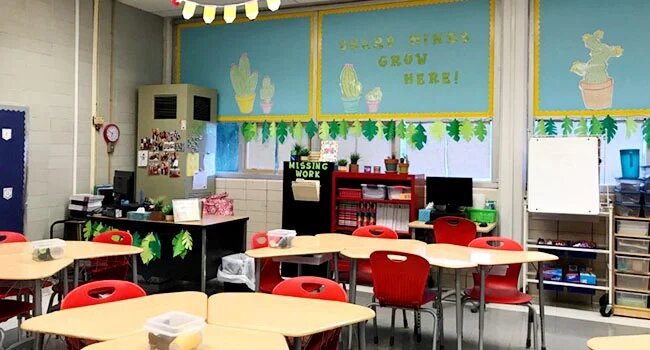When the holiday season nears, weather gets cooler, schedules become busier, and students have a more difficult time staying on the “nice” list. But who can blame them? The anticipation of winter break beckons. Staying focused is so much harder when there are snowmen to be built and cookies to be decorated. For teachers, too, the weeks preceding holiday break are challenging; the list of curriculum to cover is long, but students’ attention spans are awfully short.
Instead of beginning a countdown to the calendar year’s end, consider bringing the holiday magic into the classroom with a few of these ideas.
Add more decor.
A little bit of celebratory spirit goes a long way when it comes to decorating your classroom for the holidays. Surprise your students with some sparkly lights around the whiteboard or with a bulletin board lined with colorful fall foliage. For added coziness, use your SMART board or projector to display a long video of a crackling, tranquil fireplace. There are plenty to choose from on YouTube, and your students will love the calming background during independent work time.
Incentivize celebrations.
As your excited students become sillier and squirrelier, get creative with your classroom management by rewarding good behavior with festive activities. Younger students will love making digital snowflakes, all while reinforcing basic geometric vocabulary. For older students, grab some cheerful props and use an app (like MonaCam) to turn your Chromebook into a photo booth. Students of any age will enjoy a hot cocoa or apple cider bar on a chilly afternoon during silent reading time. Positively reinforcing great behavior will go a long way during these long weeks.
Incorporate merriment into instruction.
To keep minds from wandering during class time, think about integrating themed elements into your instruction. For example, try using holiday-related words in math problems (such as turkeys, dreidels, or pies). Take a virtual field trip to the “North Pole” by studying the arctic through the National Geographic Kids or World Wildlife Fund websites. Take your little astronomers on a venture into space to learn about the Winter Solstice. Encourage students to study different cultures by writing about and sharing their own, unique, family traditions and beliefs.
Give back.
Channel the generous spirit of the season by planning a meaningful mission with your students. Take on a service project, write thank you cards to support staff, or commit to doing random acts of kindness around the school.
During those chilly, busy months when everyone is ready for a break, it’s important to keep your classroom running smoothly. Combining fun festivity with student learning helps make the season calm and bright for all.




















